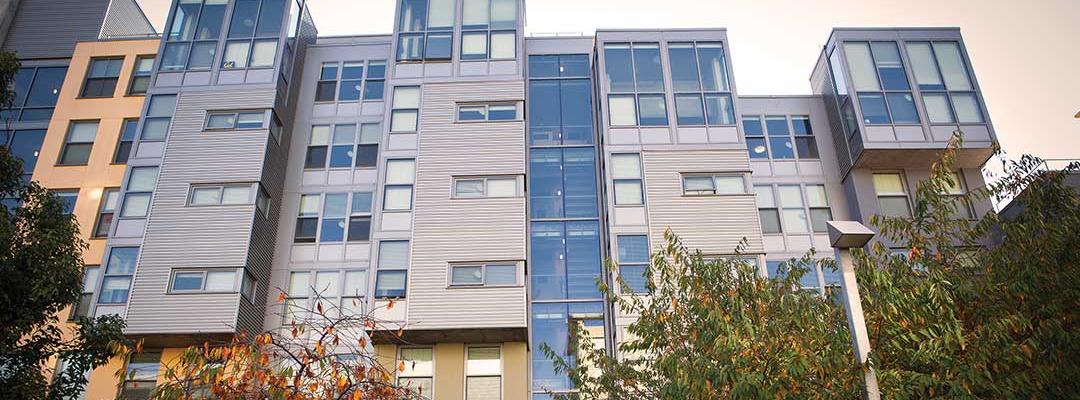Finding the right housing for your needs is critical as you start to plan for your studies here at Berkeley. Make sure you have read our blog post on budgets and looked at the websites of the housing companies we list on our housing page.
You’ll notice that there seems to be a few different types of housing available. But which one is right for you?
Read on to get more details on the many different types of housing.
Student Residences
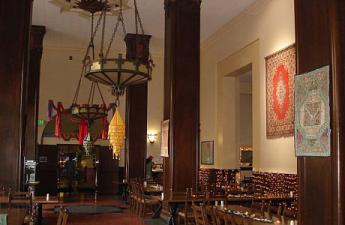
These are similar to a dormitory, are typically located near campus and are shared with other students. Unfortunately, UC Berkeley Global students are not eligible to stay in the dorms directly on the Berkeley main campus. But there are many options that are next to campus where many domestic and international students enjoy living.
Some popular student residences in Berkeley are International House, The Berk, Wesley House and Telegraph Commons.
Popular student residences in San Francisco include Columbus Residences and Found Study; you can rent a room through AnyPlace Housing.
Keep in mind that these residences are only for students, so you will typically be living with people whose ages range from 18–22. One positive thing to consider is that you will have the chance to meet and live with other students. In a student residence, you will most likely be paired with another student in a shared bedroom. It is unlikely that you will have a private bedroom.
Many dorms offer a variety of social events and activities throughout the year. Some dorms also offer meal plans, shared kitchens, study lounges and game rooms.
Private or Shared Apartment—Finding One On Your Own
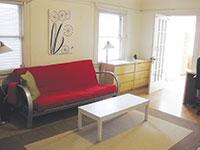
The great part about living in an apartment is that you can choose who you live with or connect with other international students to find an apartment. Here are some things to be aware of when finding a place to rent:
- You will be signing a lease, so make sure you read through this document carefully as it is a legally binding contract. See our article about what to look for in your lease.
- Check with the apartment manager or landlord to find out if you need to set up separate gas and electric and Internet services or if they are already included in the rent.
- You will need to pay your rent and possibly utility bills each month. This is important to keep in mind when choosing roommates and reading your lease. Depending on what type of lease you sign, you may be responsible for all of the rent if your roommates don’t pay. Make sure you pick reliable people for roommates who you will get along with. We recommend making a roommate agreement before you move in.
- Is the apartment furnished or unfurnished? If you need to buy furnishing and other household items, make sure to include those into your budget. Read our blog post about where to purchase or rent these items.
- Determine your apartment’s location and how far away it is from campus. Research what forms of transportation would be best to use in order to get to and from school, grocery stores, malls, etc. You may also want to research the neighborhood.
Tip: It is common for students to share a bedroom in their apartments. This significantly reduces cost. This is a great option if you are open to sharing your space and would like to save money.
Shared Apartment—Finding One Through a Broker
Several of the housing options we list on our website are brokers. These people lease unfurnished apartments in buildings all over Berkeley and San Francisco, furnish them, and rent them out by the bed or by the apartment to students. This can be a great option if you want a furnished apartment with everything included and if you don’t have your roommates already pre-selected.
These companies—like Kapi Residences, Academic Housing Rentals and Anyplace Housing—provide convenience by leasing out a bed in a shared furnished room or a whole furnished apartment. Your furnishings and household supplies are all waiting for you, and Internet and utilities are usually included. They are in several different buildings, so you can pick one with amenities and a location that you prefer.
Brokers are also used to working with our students, so they have short-term leases available.They are usually more expensive than leasing an unfurnished apartment on your own because they provide these convenient benefits.
Co-Op (Berkeley Only)
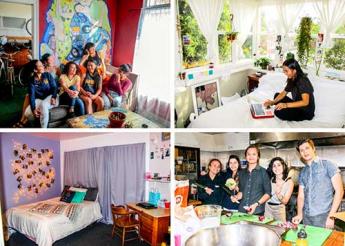
Cooperative Housing, also known as a “co-op,” is generally a large house or apartment where local students live. There are 15 different co-ops located throughout Berkeley that are available to you with different community themes, such as LGBTQ, vegetarians, women-identified only, etc.
These are shared quarters that range in size from 17 to 150 residents, and generally have shared bedrooms, kitchens, bathrooms and common areas. When living in a co-op, you must contribute about five hours a week toward a chore, such as gardening, cooking, cleaning or recycling.
Co-ops are a great option for you to meet many different types of people. It is also cheaper when compared to other student housing options, such as living in a dorm or an apartment.
However, it is communal living, you have little privacy and it’s sometimes not the cleanest. You meet a lot of people and build a strong community, but it is not for everyone. If you want to have a very “Berkeley” experience, really immerse yourself in Berkeley culture, enjoy being around people a lot and not having too much privacy, then a co-op may be right for you.
To be eligible, you must provide verification from your home university that you are receiving credit toward your degree while taking your Berkeley program.
If you are studying here in the spring, you should apply to live in a co-op by October. For Fall semester, you should apply in January or February for the best chances. But don’t be discouraged if you are later than that—they often have openings later due to cancellations. Go ahead and inquire! Check out bsc.coop to learn about the different houses.
Homestay
A homestay is an arranged living situation where you stay for a semester or a year with a local family and have the opportunity to immerse yourself in U.S. culture, as well as form relationships with a local family.
Many students also like to live in homestays to improve their English-language skills and develop lasting connections with their American host family. However, remember that you will be living in another family’s home, which means you are expected to respect that family’s household rules.
To find a homestay family, we recommend using companies such as Universal Housing or Andretto Solutions. HomeStayMatch.com allows you to match yourself with a family and see the location and type of accommodations so you can find the perfect fit!
Accessible Housing
In the United States, “accessible” (such as accessible housing, accessible bathroom or accessible entrance) means that something is usable to people with disabilities. If you have any sort of disability and need housing that will be accessible to your needs, please get in touch with us at extension-intl@berkeley.edu so we can best assist you.=
We are happy to connect you to our Disabled Student Services Office to make sure you get the academic accommodations you may need. We can also connect you to housing providers that have accessible housing options. When you speak with landlords, be sure to ask about accessible accommodations. It is illegal in California for housing providers to discriminate against people with disabilities. Learn about what is considered discrimination and what are your rights.
Students With Families
Many of the student dormitory and shared apartment-style accommodations are not a great fit if you are coming with children. We recommend looking into whole apartments, furnished or unfurnished.
Unique Housing and Grant Street Apartments are great options in Berkeley. In San Francisco, check out Kopa and June Homes for furnished, short-term housing.
Also, visit the Berkeley Spouses, Partners, and Parents Association to connect with other parents, and learn about playdates, school and daycare resources, and more!
How to Choose
It might help to see where most students live. According to a housing survey from Spring 2019, the top choices were a shared bedroom in a home or apartment, followed by dorm-style accommodation, and then a private bedroom in a room or apartment. Keep in mind that this is only a sample of our students, but it shows our students’ popular choices!
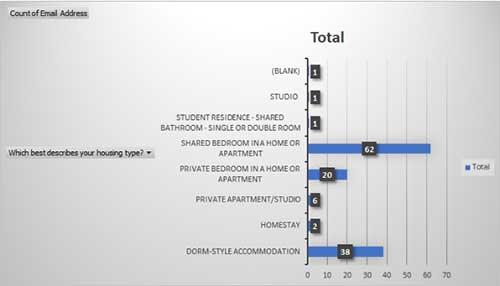
Need More Assistance?
If you are having trouble deciding, email extension-intl@berkeley.edu or make a housing consultation appointment. We are happy to help you think through the options so you can make the best housing decision.
